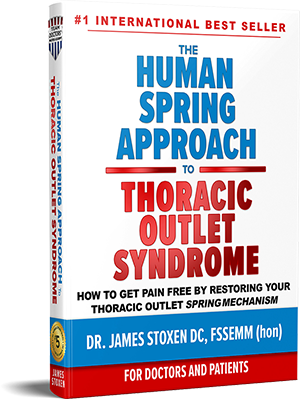We can apply some of the laws of engineering and physics such as Hooke’s Law Of Physics which states:
The deeper that the spring is depressed the more energy it recycles back to the run, jog, walk or spring.
Hooke’s Law of spring engineering states that we can push the human spring to its limits to maximize its potential energy as long as we don’t exceed the elastic limit of the spring or the yield point.
Hooke’s law of elasticity is an approximation that states that the extension of a spring is in direct proportion with the forces added to it as long as this load does not exceed the elastic limit.
That is the trick!
When we jump down, gravity exerts a loading force on the spring of the body.
When we land, forces are loaded into the human spring. Remember that the force of the landing and the bodyweight with the speed of landing, determine the external forces of the landing.
Newtons Law of Physics
F = M x A
Mass of your body (no real change)
X Acceleration (Speed of Movement)
Force of landing
Determining the exact amount of external forces your body is capable of loading into the human spring determines your elastic limit. The elastic limit is the maximum capacity of tissue strength in the elastic elements in the spring suspension system that can safely spring you off the ground without causing damaging stress in your body.
This has to be evaluated instantaneously with one jump and also evaluated during multiple impacts incorporating the tissue fatigue factor, Muscle Or Joint Pain, Or Acute Injury.
The ability of you and your trainer to calculate elastic limit of one impact and with multiple impacts will determine your training for that day.
You should be training just below the elastic limit to take advantage of maximum positive tissue adaptation.
How much you progress and how much risk you take to maximize your progress is the fine line element which makes training interesting.
That is the balancing act of elite level training.
What does plyometrics do for your human spring?
Plyometrics develops the elastic properties of muscles, ligaments, tendons and joints, which means it develops your human spring.
The elastic energy produced by spring produces a quicker reactive movement than that produced solely by muscular contraction and since there is more speed and power is a function of speed it has more power too.
The combination of both produces maximum spring power.
If you remember, Hooke’s Law of physics states that the deeper the spring descends, the more energy it transmits back into the release.
In other words the more the body spring is stretched (extension springs) or compressed (compression springs) the more energy we get from the spring.
If we want to exceed high levels of performance in sports, it is required that we use the most advanced approach for evaluating, restoring and training the amazing human spring.
Hooke’s Law of Spring states that spring energy produces very rapid increases with the forces of increased speed from walking to running.
In fact as we go from walking speed to running we increase forces on the master spring from 1x bodyweight to 3 – 5x bodyweight.
F = M x A
The speed and over all power increase as well. If someone runs into you while walking vs full speed running the force will be felt much greater. Think about that same force on the single bare foot during running or barefoot running.
We can see a gradual increase in force from walking to running with step-by-step increases in speed.
For example
- Walking is approximately 1.25 – 2x of body weight force
- Jogging is approximately 2 – 3x force of body weight force
- Running is approximately 4 – 5x of body weight force
Knowing how the spring mechanism loads is how I designed the Human Spring approach to examining the body during different speeds of movement of impact forces.
Doing a gait evaluation during walking is not going to tell you if your elastic capacity is exceeded causing an abnormal movement pattern in the human spring at speeds of jogging or running.
You have to test the patient (runner) running barefoot at these speeds to know for sure if the elastic limit is exceeded and at what speed.
A doctor can do this test at walking speed and a speed of fast walking in a 10 foot run in their office evaluating the video frame by frame checking for any abnormal movement patterns which show up as speed increases or the forces of the impacts increase.
The commands are simple:
- Walk towards me
- Turn around and walk back
- Walk towards me again as fast as you can and walk back.
The total time for the test is less than 30 seconds.
Retraining healthy spring back into the body in a safe and effective way:
How do we develop a stronger elastic limit to maximize safe spring loading capacity according to hookes law?
In order to develop spring strength to withstand running forces without the spring breaking down we have to attain a force of 450 pounds for a 150 pound person.
We cannot strap 450 pounds to our feet which also develops muscular strength which is different from spring strength.
The difference is one trains mostly muscles and the other trains tendons and arch ligamentus complexes.
We can train to increase spring elastic capacity by putting the spring through progressively faster speeds.
The next thing is to develop a routine that develops this strength in every movement that is required for safe and effective spring in every floor.
We train the body as a three dimensional object training it in multiple directions such as:
- zig zag patterns
- circular patterns
- eight point jumps
- and other plyometric like activities.
The Hooke’s law of physics in reference to the human spring mechanism:
Hooke’s Law of Physics and engineering states that the deeper we depress the spring to more energy returns back. That means that the deeper we bend the human foot arch leaf spring to increase the depth or capacity of the human spring the more force we can load safely into the human spring.
Using this theory we increase the depth of the human spring with these approaches:
- We would make the arch and entire flooring system of the human spring more flexible ONLY within the range of motion that was required to perform the activity of running
- We would focus on increasing the depth or capacity of the foot spring to load as much force into the spring as possible by stretching the arch spring
- We would focus on increasing the depth or capacity of the foot spring to load as much force into the spring as possible by making sure there are no indirect or direct muscle tension on the spring.
Direct spring tension – When you tense the muscles surrounding the spring loading system when you are stressed or fail to relax the limb prior to impact, decreasing the spring capacity to load the force into the mechanism. Why do you hear top coaches instruct their athletes to relax when swinging a tennis racket, golf club, in a sprint or boxing round?
Indirect spring tension – means you have examined the human spring for any muscle tensions or spasms that may be there without your knowledge. These muscle spasms are stimulated by the brain as tonic protective mechanisms attempting to protect you from some abnormal movement pattern during the execution of walking or running with poor form. These spasms can also develop from injury (stiffness) or sustained contraction from standing or sustaining the same joint position for a sustained period of time.
If you detect spasms in the muscles of the body there are spring release techniques to release the patterns of spasms that inhibit the maximum safe loading of the human spring mechanism.
See Video Tutorials #77-89
The more we stretch, relax and stimulate the muscles of the spring suspension system ended deeper we can safely load forces into our human spring, the more protective, efficient and powerful will be the human spring.
The more deformable it becomes and the more it dissipates shock and the more spring back it provides
Where and when do we break this important law?
We stretch all muscles and joints beyond the range of motion that is required for running.
This weakens connective tissue spring recoil. Recent studies of static stretching before workouts or competition suggest that stretching can increase the risk of injuries rather than reduce the risks of injury. The human spring theory can explain this. When the joint reaches end range of motion, connective tissue can enhance natural elastic spring recoil of the body part reducing the possibility of the body part to drift outside the safe range. Elastic recoil at the end range can spring the body back into the running cycle reducing muscular contratile effort thus improving efficiency of motion. Stretching the muscles beyond the range of motion required for running does nothing to improve running mechanics as the body will never get to that range of motion anyway.
Click here to watch Dr james Stoxen DC Demonstrate Scissor Stretching
When we do not stretch the parts of the spring as a balance three-dimensional mechanism.
I constantly see runners stretching the quad by grabbing the front of their shoe and pulling their foot back attempting to get the heel of the shoe to touch their buttocks. This is the stretch they do. Also they lean forward with their foot on the ground stretching only the calf. The foot and arch spring mechanism never gets stretched yet this is the joints are the most restricted due to wearing shoes which confine the bones in an encasement for 8 – 12 hours a day. Also when we wear street shoes and running shoes the shoe binds the sole of the foot to a stiff platform that will not allow the foot to move in a position to increase the depth of the arch or depth of the human spring. The most important stretch is to stretch and manipulate the human spring to increase the depth of or the loading capacity of the spring to a accept more force safely in all directions
Orthotics, arch supports and shoe supports that interfere with natural spring loading and rolling from supination to pronation
If the soul has an arch support other than this support it can get in the way of the maximum depth of the spring loading phase and of the landing of the human foot. We don’t stretch the foot to increase the loading capacity of the foot to take up more force but we do the opposite when we put something underneath the arch spring loading mechanism to keep it from ever allowing it to load any force safely into the spring. When you walk or run faster more force is loaded into the spring. If the spring loads more force it springs down deeper or with more spring. A support that inhibits the spring loading causes the body to load with an abrupt landing sending stressful and straining forces into the body leading to misuse injuries over time and obvious inefficiency.Page 43 of the book by Mel Cunningham Siff, Yuri Vitalievitch Verkhoshansky – Supertraining International (1999)
For instance, if a joint is subjected to constant low intensity loading or for extended period of time, slowed the information of the tissues occurs, a phenomenon known as creep and which is characteristic of viscoelastic substances in general. Furthermore collagenase tissue increases significantly in strength and sick diffidence with increased rate of loading there by emphasizing the intelligent use of training with high Excel ration methods one study found an increase of almost 50% in load of knee ligaments to failure when the voting rate was increased for four fold (Kennedy et al 1976)
Of further interest is the fact that that’s slow loading rates, the bony insertion of a ligament is the weakest component of the ligament–phone complex whereas the ligament is the weakest component at a very fast loading rates. These results imply that, with an increase in loading rate, the strength of bone with which also contains collagen increases more than the strength of ligament (Frankel and Nordin 1980). Of added relevance is the finding that tensile strength of healthy tendon can be more than twice the strength of its associated muscle, which explains why a ruptures are more common in muscles than in tendons (Elliot 1967)
1. The more deformable it becomes and the more it dissipates in pose shocks
Page 43 of the book by Mel Cunningham Siff, Yuri Vitalievitch Verkhoshansky – Supertraining International (1999) –









